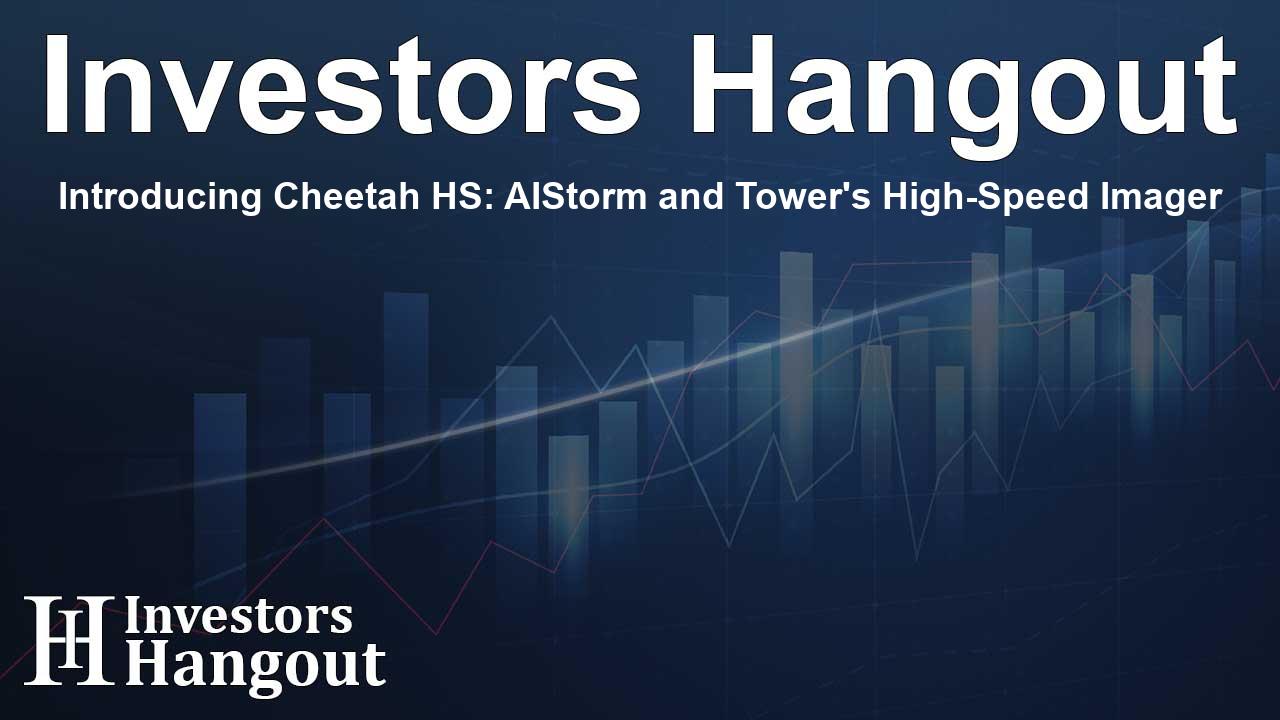Introducing Cheetah HS: AIStorm and Tower's High-Speed Imager

A Revolutionary Step in High-Speed Imaging
Charge-domain imager brings unparalleled slow-motion vision
AIStorm and Tower Semiconductor have come together to launch the Cheetah HS, an advanced imager that captures an impressive rate of 260,000 frames per second. This monumental speed, 2,000 to 4,000 times faster than typical CMOS sensors, offers exciting possibilities in fields like inspection, robotics, and sports analysis.
What Makes Cheetah HS Unique?
The Cheetah HS features a compact 120×80-pixel architecture designed for efficiency. At its core, it integrates a first-layer AI capability, enabling immediate processing of imagery in real time. This innovative approach minimizes power consumption and provides a cost-effective alternative to traditional high-speed cameras.
David Schie, CEO of AIStorm, emphasized this technology's value by stating that it allows consumer and industrial applications to afford ultra-slow-motion analysis that was previously available only at a high price point. The collaboration with Tower, a seasoned leader in charge-domain global-shutter pixels, ensures that this technology maintains high performance while being economically viable.
Key Benefits of the Cheetah HS
This innovative imager provides several key advantages for its users:
- Adjustable frame rate offering flexibility in applications.
- Integrated LED driver, supporting a programmable current of up to 40 mA.
- Enhanced performance in low-light conditions.
- Output capabilities that allow for both pulse streams for neural networks and high-speed video capture.
- A considerable cost benefit against existing alternatives.
- Reduced processing costs through expedited image capture.
- Ability to analyze high-speed events in slow motion to examine intricate details.
How Cheetah HS Operates
This cutting-edge technology utilizes a charge-domain architecture that sets it apart. In typical high-speed cameras, data converters increase costs and complexity. In contrast, Cheetah HS converts incoming photons to charge, processes the first layer of the neural network in an analog format, and produces a pulse train ready for additional processing. This method not only streamlines costs but also enhances efficiency, making high-speed imaging accessible to various sectors.
Availability of Cheetah HS
The Cheetah HS is currently available in both chip form and complete reference-camera systems, suitable for immediate deployment in numerous applications from robotics to security systems. With its remarkable specifications, it is poised to change the landscape of imaging technology.
About AIStorm and Tower Semiconductor
AIStorm has established itself as a leader in AI-enhanced edge solutions, driving innovations in imaging and biometrics. With over 40 patents globally, the company is dedicated to creating solutions that reduce latency, optimize power use, and lower costs associated with inference.
Tower Semiconductor (NASDAQ/TASE: TSEM) is recognized as a top foundry for high-value analog semiconductor solutions. They provide technology platforms across multiple sectors, including automotive and medical devices. By leveraging their state-of-the-art technology, Tower Semiconductor creates impactful products that meet evolving industry standards.
Frequently Asked Questions
What is the main feature of the Cheetah HS?
The primary feature of the Cheetah HS is its remarkable ability to capture up to 260,000 frames per second, enabling real-time analysis in various applications.
Who are the key players behind Cheetah HS?
AIStorm and Tower Semiconductor have collaborated to develop the Cheetah HS, combining expertise in charge-domain technology and semiconductor solutions.
What industries can benefit from Cheetah HS?
Industries such as robotics, inspection, security, and sports technology can greatly benefit from the imaging capabilities of the Cheetah HS.
What advantages does Cheetah HS offer over traditional cameras?
Cheetah HS offers lower power consumption, reduced costs, and greater speed in capturing images compared to traditional high-speed cameras.
How does Cheetah HS process images?
Cheetah HS processes incoming photons into charge, then computes the first stage of a neural network in an analog format, producing a pulse train for further processing.
About The Author
Contact Caleb Price privately here. Or send an email with ATTN: Caleb Price as the subject to contact@investorshangout.com.
About Investors Hangout
Investors Hangout is a leading online stock forum for financial discussion and learning, offering a wide range of free tools and resources. It draws in traders of all levels, who exchange market knowledge, investigate trading tactics, and keep an eye on industry developments in real time. Featuring financial articles, stock message boards, quotes, charts, company profiles, and live news updates. Through cooperative learning and a wealth of informational resources, it helps users from novices creating their first portfolios to experts honing their techniques. Join Investors Hangout today: https://investorshangout.com/
The content of this article is based on factual, publicly available information and does not represent legal, financial, or investment advice. Investors Hangout does not offer financial advice, and the author is not a licensed financial advisor. Consult a qualified advisor before making any financial or investment decisions based on this article. This article should not be considered advice to purchase, sell, or hold any securities or other investments. If any of the material provided here is inaccurate, please contact us for corrections.
